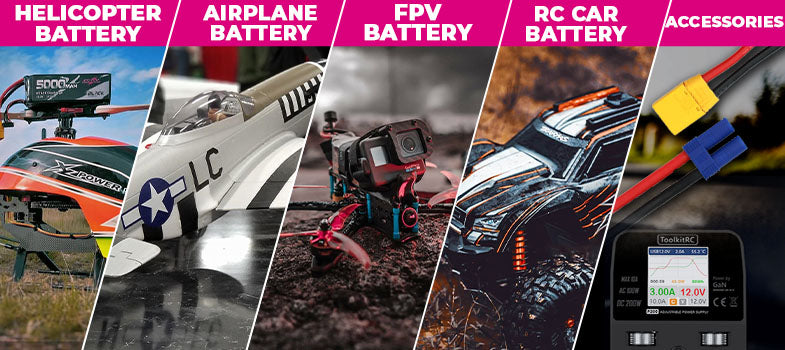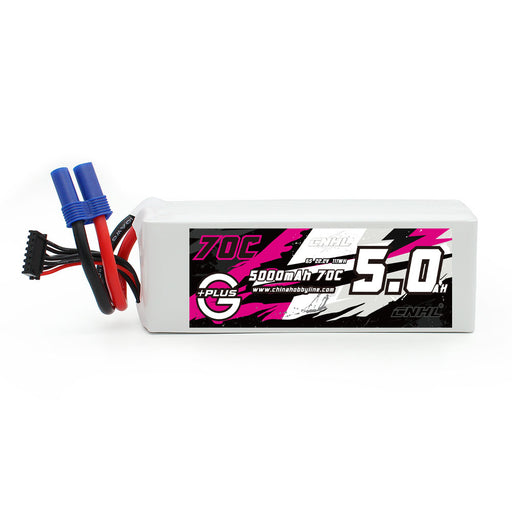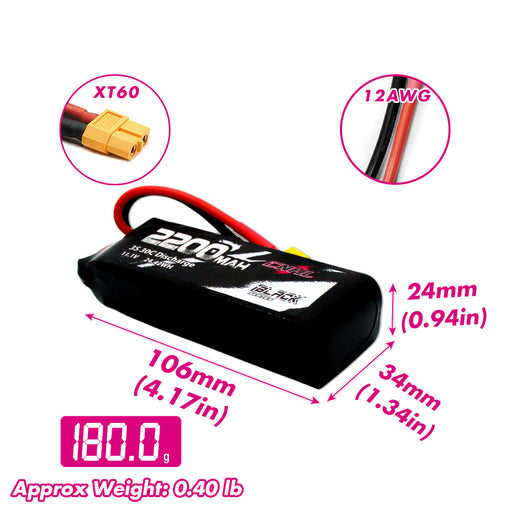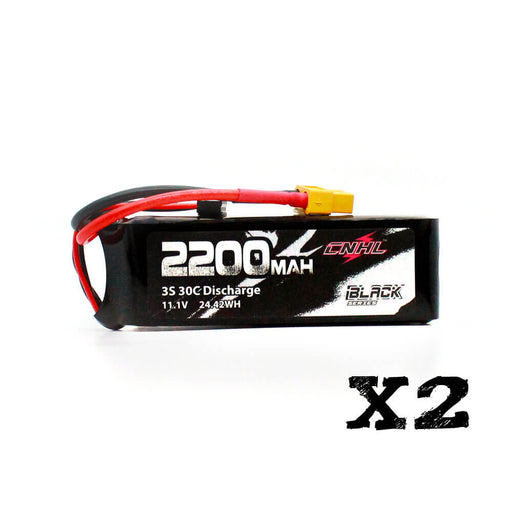
적절한 드론 배터리 관리: 수명과 성능을 위한 팁
드론 배터리 항공 장비에서 가장 간과되기 쉽지만 가장 중요한 부품인 경우가 많습니다. 당신이’안정화된 카메라 드론을 비행하든 FPV 쿼드로 게이트를 통과하든, 배터리는 시스템의 심장입니다. 배터리 건강은 비행 시간과 품질뿐 아니라 비행 안전에도 영향을 미칩니다.
적절한 배터리 관리는 단순히 충전기를 꽂는 것 이상입니다. 보관, 충전, 방전, 심지어 배터리 선택 방법까지 포함됩니다. 이 글에서는’스마트 배터리와 전통적인 LiPo 팩 모두의 수명을 연장할 수 있는 실용적이고 현실적인 팁을 자세히 설명하여 투자 가치를 보호하고 모든 비행에서 최고의 성능을 얻을 수 있도록 하겠습니다.
배터리 유지 관리가 중요한 이유
경험 많은 조종사라면 누구나 배터리 관리가 부실할 때 나타나는 징후를 본 적이 있습니다.—부풀어 오른 팩, 비행 시간 급감, 또는 더 심한 경우 충전되지 않는 배터리를 초래할 수 있습니다.’전혀 충전되지 않습니다. 드론 배터리는’저렴하지 않으며, 방치하면 안전 문제와 성능 저하를 초래할 수 있습니다. 부풀어 오른 LiPo 배터리나 과도하게 방전된 스마트 배터리는’비행 하루를 망치는 것뿐만 아니라—드론을 망칠 수 있습니다.
배터리 관리는 단순한 권장 사항이 아닙니다. 꾸준히 비행하고, 비행 중 전원 손실을 피하며, 장비를 신뢰할 수 있게 유지하려면 필수적인 루틴입니다.
스마트 배터리 vs. LiPo 팩: 차이점 알아보기
배터리 유지 관리 방법에 들어가기 전에, 드론에 사용되는 두 가지 주요 유형을 구분하는 것이 중요합니다.
스마트 배터리는 DJI Mini 3 또는 Mini 4 Pro 같은 소비자용 드론에서 흔히 볼 수 있습니다. 건강, 온도, 전압 등을 모니터링하는 내장 관리 시스템이 탑재되어 있어 더 안전하고 사용자 친화적입니다. 또한 자동 방전 기능이 있어 며칠간 사용하지 않으면 충전을 서서히 줄여 안전한 저장 수준으로 유지합니다.
반면 LiPo 배터리는 주로 FPV 드론과 RC 비행기에 사용됩니다. 높은 전류 출력과 가벼운 무게를 제공합니다.—레이싱과 프리스타일에 이상적—하지만 내장된 안전 기능이 전혀 없습니다. 저장 전압, 충전 방법, 밸런스 충전, 방전 한도를 모두 수동으로 관리해야 합니다. 이 중 하나라도 소홀히 하면 배터리 수명이 크게 단축될 수 있습니다.—또는 더 심각한 경우.
드론 배터리를 올바르게 보관하는 방법
보관은 배터리 관리에서 가장 중요하지만 오해받기 쉬운 부분 중 하나입니다.
스마트 배터리는 절대 0% 상태로 보관해서는 안 됩니다.—이 배터리를 완전히 방전시키면 복구할 수 없게 될 수 있습니다. 다행히 대부분의 스마트 배터리는 자동으로 안전한 수준(보통 60%)까지 방전됩니다.–며칠간 사용하지 않으면 65%)까지 떨어집니다. 그것은’사용하지 않을 때 원하는 수준입니다.
LiPo 배터리는 더 많은 주의가 필요합니다. 항상 “저장 충전,” 일반적으로 3.75입니다.–셀당 3.85V. LiPo를 완전 충전 상태로 오랫동안 두면 팽창이 발생할 수 있고, 너무 낮은 전압으로 보관하면 복구 불가능한 전압 강하가 발생할 수 있습니다. 저장 모드 기능이 있는 밸런스 충전기가 이를 쉽게 만들어 줍니다.—다음 날 다시 비행하지 않는 한 각 세션 후에 사용하세요.

배터리는 항상 방화 용기나 LiPo 백에 보관하고, 서늘하고 건조한 곳에 두며, 직사광선과 인화성 물질에서 멀리 떨어뜨리세요.
드론 배터리 충전을 위한 모범 사례
충전은 간단해 보이지만’또 다른 실수가 비용이 많이 드는 영역입니다.
비행 전날이나 당일에 배터리를 충전하세요.—일주일 전에 미리 하지 마세요. 특히 LiPo 배터리는 완전 충전 상태로 오래 두는 것을 좋아하지 않습니다. LiPo를 충전할 때는 항상 밸런스 충전기를 사용하여 각 셀이 동일한 전압에 도달하도록 하세요. 셀 전압이 고르지 않으면 배터리 효율이 떨어지고 시간이 지남에 따라 손상 위험이 증가합니다.
충전 중에는 절대 배터리를 방치하지 마세요. 항상 불연성 표면에서 충전하고 가능하면 소화기를 가까이에 두세요. 또한 충전기와 배터리가 이를 감당할 수 있다고 확신하지 않는 한 급속 충전은 피하세요.—느리고 꾸준한 것이 종종 더 긴 수명을 의미합니다.
비행 중 사용: 얼마나 낮으면 너무 낮은가?
가장 큰 배터리 손상 원인 중 하나는 너무 오래 비행하는 것입니다. 정기적으로 배터리를 20% 이하로 방전한다면,’영구적인 용량 손실 위험이 있습니다. 그 마지막 1분의 비행은 그로 인한 손상만큼의 가치가 없습니다.
스마트 배터리는 보통 낮을 때 경고를 주거나 자동 착륙을 시작하지만, LiPo는’전압을 모니터링하는 것은 당신의 몫입니다. 전압 알람, 타이머 또는 OSD 전압 표시를 설정하여 배터리가 너무 많이 떨어지기 전에 착륙하도록 하세요. 대부분의 설정에서 부하 상태에서 셀당 약 3.5V에 착륙하는 것이 안전한 목표입니다.
드론에 맞는 배터리 선택하기
모든 LiPo 배터리가 동일하지 않습니다. 고품질 배터리는 비행 경험과 장기 신뢰성 모두에 큰 차이를 만듭니다.
FPV 드론의 경우, CNHL (China Hobby Line)은 뛰어난 내구성, 성능 및 가치를 제공하는 가장 신뢰받는 브랜드 중 하나입니다. CNHL과 같은 인기 모델을 제공합니다 6S 1300mAh 또는 4S 850mAh 는 프리스타일 조종사와 레이서 모두에게 널리 사용됩니다.
배터리를 선택할 때는 전압(셀 수)과 C 등급(방전율)을 드론에 맞게 조정하세요’s 사양. Don’용량을 과도하게 늘리지 마세요—무거운 배터리가 기술적으로 더 많은 mAh를 제공할 수 있지만, 추가된 무게는 기동성을 떨어뜨리고 실제 비행 시간을 단축시킬 수 있습니다.
저렴하고 알려지지 않은 브랜드는 피하세요. 몇 달러를 아끼려다 조기 고장이나 심한 경우 위험한 오작동으로 이어질 수 있습니다.
일반적인 배터리 문제 해결
드론 조종사가 흔히 겪는 두 가지 문제는 배터리 팽창과 비행 시간 감소입니다. 둘 다 예방할 수 있습니다.
팽창은 보통 완전 충전 상태로 보관하거나 과충전, 고온 노출로 인해 발생합니다. 팽창된 팩은 안전하게 폐기하세요—하지 마세요’비행하지 마세요. 스마트 배터리는 자동 방전으로 이 위험을 줄이며, LiPo 배터리에는 저장 모드 충전이 필수입니다.
비행 시간이 줄어드는 것은 보통 과도한 방전이나 셀 불균형에서 비롯됩니다. 몇 달 만에 비행 시간이 줄어든다면 충전 습관을 점검하세요. 자주 밸런스 충전을 하면 초기에 성능 회복에 도움이 됩니다.
최종 생각
배터리 관리는’흥미롭지는 않지만’절대적으로 필수적입니다. 투자 보호, 더 안전한 비행 보장, 그리고 매 세션에서 최대 성능을 얻는 데 도움이 됩니다—DJI 드론으로 순항하든 5인치 쿼드로 새로운 트릭 라인을 시도하든
기본 습관을 따르면—적절한 전압으로 보관하고, 적절한 장비로 충전하며, 과도한 방전을 피하고, CNHL과 같은 신뢰할 수 있는 브랜드를 구매하세요—당신은’드론 조종사가 직면하는 일반적인 배터리 문제의 90%를 피할 수 있습니다.
당신의 드론에는 스마트 센서, HD 비디오, 그리고 조정된 PID가 있을 수 있습니다—하지만 그것은’비행 여부를 결정하는 배터리입니다.

전체 영상을 확인하세요 여기

베스트 셀러즈
-
원래 가격 $65.99원래 가격 $65.99 - 원래 가격 $65.99원래 가격 $65.99$54.99 USD - $65.99 USD$54.99 - $65.99현재 가격 $54.99 USD
CNHL G+Plus 5000mAh 22.2V 6S 리포 배터리 70C EC5 플러그 포함
재고 10+개 이상 있습니다사양: 재고 번호: 500706EC5 용량: 5000mAh 전압: 22.2V / 6-셀 / 6S1P 방전율: 70C 연속 / 140C 순간 충전율: 최대 5C 크기(1-5mm 차이): 49X51X149mm(높이*너비*길이) 대략 무게(±5g) : 714g 출...
전체 세부 정보 보기원래 가격 $65.99원래 가격 $65.99 - 원래 가격 $65.99원래 가격 $65.99$54.99 USD - $65.99 USD$54.99 - $65.99현재 가격 $54.99 USD최대 17% 절약하세요 -
원래 가격 $38.99원래 가격 $38.99 - 원래 가격 $38.99원래 가격 $38.99$34.99 USD - $38.99 USD$34.99 - $38.99현재 가격 $34.99 USD
CNHL 스피디 피자 시리즈 프로 1350mAh 22.2V 6S 150C 리포 배터리 XT60 플러그 포함
재고 10+개 이상 있습니다사양: 재고 번호: 1351506PZ 용량: 1350mAh 전압: 22.2V / 6셀 / 6S1P 방전 속도: 연속 150C / 순간 300C 충전 속도: 최대 5C 크기(1-5mm 차이): 38X38X78mm 대략 무게(±5g) : 215g 출력 커넥터: X...
전체 세부 정보 보기원래 가격 $38.99원래 가격 $38.99 - 원래 가격 $38.99원래 가격 $38.99$34.99 USD - $38.99 USD$34.99 - $38.99현재 가격 $34.99 USD최대 10% 절약하세요 -
원래 가격 $51.98원래 가격 $51.98 - 원래 가격 $51.98원래 가격 $51.98$45.98 USD - $51.98 USD$45.98 - $51.98현재 가격 $45.98 USD
2팩 CNHL 블랙 시리즈 V2.0 1300mAh 22.2V 6S 130C 리포 배터리 XT60 플러그 포함
재고 10+개 이상 있습니다사양 재고 번호: 1301306BK 용량: 1300mAh 전압: 22.2V / 6-셀 / 6S1P 방전율: 130C 연속 / 260C 순간 충전율: 최대 5C 크기(1-5mm 차이): 48X33X77mm 대략 무게(±5g) : 210g 출력 커넥터: XT60 밸...
전체 세부 정보 보기원래 가격 $51.98원래 가격 $51.98 - 원래 가격 $51.98원래 가격 $51.98$45.98 USD - $51.98 USD$45.98 - $51.98현재 가격 $45.98 USD최대 12% 절약하세요 -
원래 가격 $43.98 - 원래 가격 $43.98원래 가격 $43.98$43.98 USD$43.98 - $43.98현재 가격 $43.98 USD
[Combo] 2팩 CNHL MiniStar 1500mAh 14.8V 4S Lipo 배터리 120C XT60 플러그 포함
재고 10+개 이상 있습니다사양: 재고 번호: 1501204 용량: 1500mAh 전압: 14.8V / 4셀 / 4S1P 방전 속도: 연속 120C / 순간 240C 충전 속도: 최대 5C 크기(1-5mm 차이): 37X33X76mm 대략 무게(±5g) : 169g 출력 커넥터: XT60...
전체 세부 정보 보기원래 가격 $43.98 - 원래 가격 $43.98원래 가격 $43.98$43.98 USD$43.98 - $43.98현재 가격 $43.98 USD -
원래 가격 $23.98 - 원래 가격 $37.98원래 가격 $23.98 - 원래 가격 $37.98원래 가격 $23.98$19.98 USD - $37.98 USD$19.98 - $37.98현재 가격 $19.98 USD
2팩 CNHL 블랙 시리즈 2200mAh 3S 11.1V 30C 리포 배터리 XT60 플러그 포함
재고 10+개 이상 있습니다사양: 재고 번호: 220303BK 용량: 2200mAh 전압: 11.1V / 3셀 / 3S1P 방전율: 30C 연속 / 60C 버스트 충전 속도: 최대 5C 크기(1-5mm 차이): 24X34X106mm 대략 무게(±5g) : 180g 출력 커넥터: XT60 ...
전체 세부 정보 보기원래 가격 $23.98 - 원래 가격 $37.98원래 가격 $23.98 - 원래 가격 $37.98원래 가격 $23.98$19.98 USD - $37.98 USD$19.98 - $37.98현재 가격 $19.98 USD최대 17% 절약하세요
새 항목
-
원래 가격 $122.99 - 원래 가격 $122.99원래 가격 $122.99$122.99 USD$122.99 - $122.99현재 가격 $122.99 USD
VOLANTEX BF109 RC 비행기 4채널 RTF – 자이로 및 XPilot 탑재 제2차 세계대전 전투기
단 9 개만 남았습니다VOLANTEX BF109 4채널 RC 비행기 RTF는 가장 상징적인 제2차 세계대전 전투기 중 하나를 컴팩트하고 초보자 친화적인 패키지로 선보입니다. 400mm 날개폭, 가벼운 EPP 폼 기체, 그리고 XPilot 자이로 시스템을 갖춘 이 전투기는 새로운 ...
전체 세부 정보 보기원래 가격 $122.99 - 원래 가격 $122.99원래 가격 $122.99$122.99 USD$122.99 - $122.99현재 가격 $122.99 USD -
원래 가격 $117.99 - 원래 가격 $117.99원래 가격 $117.99$117.99 USD$117.99 - $117.99현재 가격 $117.99 USD
Volantex RC 비행기 P51D V2 400mm RTF – 초보자를 위한 XPilot 안정장치가 탑재된 4채널 워버드
단 9 개만 남았습니다Volantex RC 비행기 P51D V2 RTF는 학습을 최대한 편안하게 할 수 있도록 설계된 컴팩트한 WWII 스타일 전투기입니다. 400mm 날개 길이, EPP 폼 구조, XPilot 6축 안정화 장치를 갖춘 이 Volantex RC 비행기는 초보자에게 ...
전체 세부 정보 보기원래 가격 $117.99 - 원래 가격 $117.99원래 가격 $117.99$117.99 USD$117.99 - $117.99현재 가격 $117.99 USD -
원래 가격 $148.87 - 원래 가격 $148.87원래 가격 $148.87$148.87 USD$148.87 - $148.87현재 가격 $148.87 USD
MF-A84 690mm P-47 스타일 브러시리스 RC 비행기 (RTF, 카메라 없음)
단 9 개만 남았습니다MF-A84 690mm 브러시리스 RC 비행기는 P-47 썬더볼트와 Ki-84 같은 클래식 전투기에서 영감을 받은 전투기 스타일 모델입니다. 강력한 브러시리스 모터, 3단계 자이로 시스템, EPP 내구성, 최대 25분 비행 시간으로 초보자와 숙련된 조종사 모...
전체 세부 정보 보기원래 가격 $148.87 - 원래 가격 $148.87원래 가격 $148.87$148.87 USD$148.87 - $148.87현재 가격 $148.87 USD -
원래 가격 $95.99 - 원래 가격 $95.99원래 가격 $95.99$95.99 USD$95.99 - $95.99현재 가격 $95.99 USD
CNHL G+Plus 6000mAh 22.2V 6S 100C 리포 배터리 EC5 플러그 포함
재고 10+개 이상 있습니다사양: 재고 번호: 6001006EC5 용량: 6000mAh 전압: 22.2V / 6-셀 / 6S1P 방전율: 100C 연속 / 200C 순간 충전율: 최대 5C 크기(1-5mm 차이): 40X66X170mm(높이*너비*길이) 대략 무게(±5g) : 975g...
전체 세부 정보 보기원래 가격 $95.99 - 원래 가격 $95.99원래 가격 $95.99$95.99 USD$95.99 - $95.99현재 가격 $95.99 USD -
원래 가격 $63.99 - 원래 가격 $63.99원래 가격 $63.99$63.99 USD$63.99 - $63.99현재 가격 $63.99 USD
CNHL G+Plus 6000mAh 14.8V 4S 100C 리포 배터리 XT90 플러그 포함
재고 10+개 이상 있습니다사양: 재고 번호: 6001004 용량: 6000mAh 전압: 14.8V / 4-Cell / 4S1P 방전 속도: 연속 100C / 순간 200C 충전 속도: 최대 5C 크기(1-5mm 차이): 27X66X170mm 대략 무게(±5g) : 669.5g 출력 ...
전체 세부 정보 보기원래 가격 $63.99 - 원래 가격 $63.99원래 가격 $63.99$63.99 USD$63.99 - $63.99현재 가격 $63.99 USD





















댓글 남기기